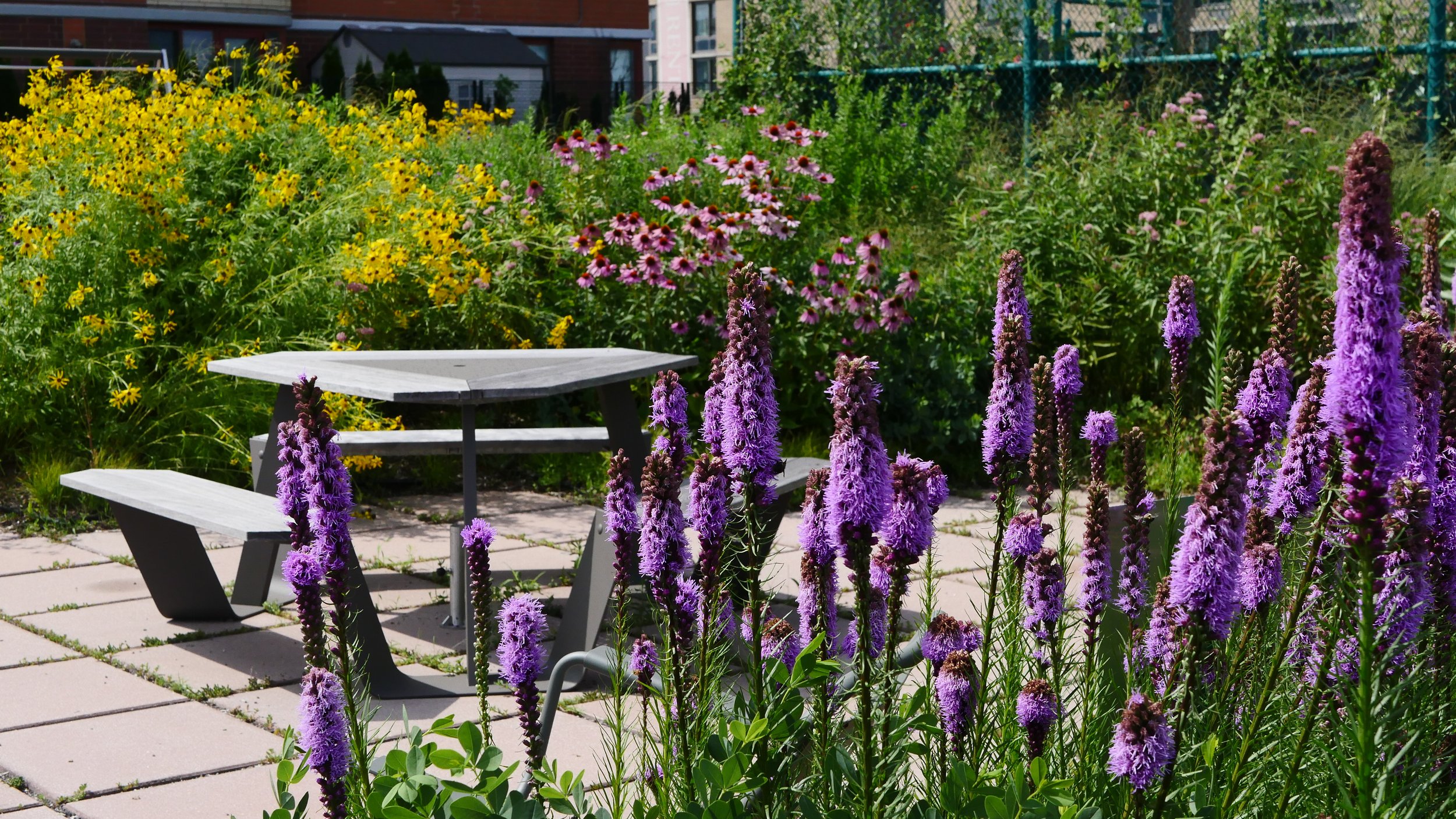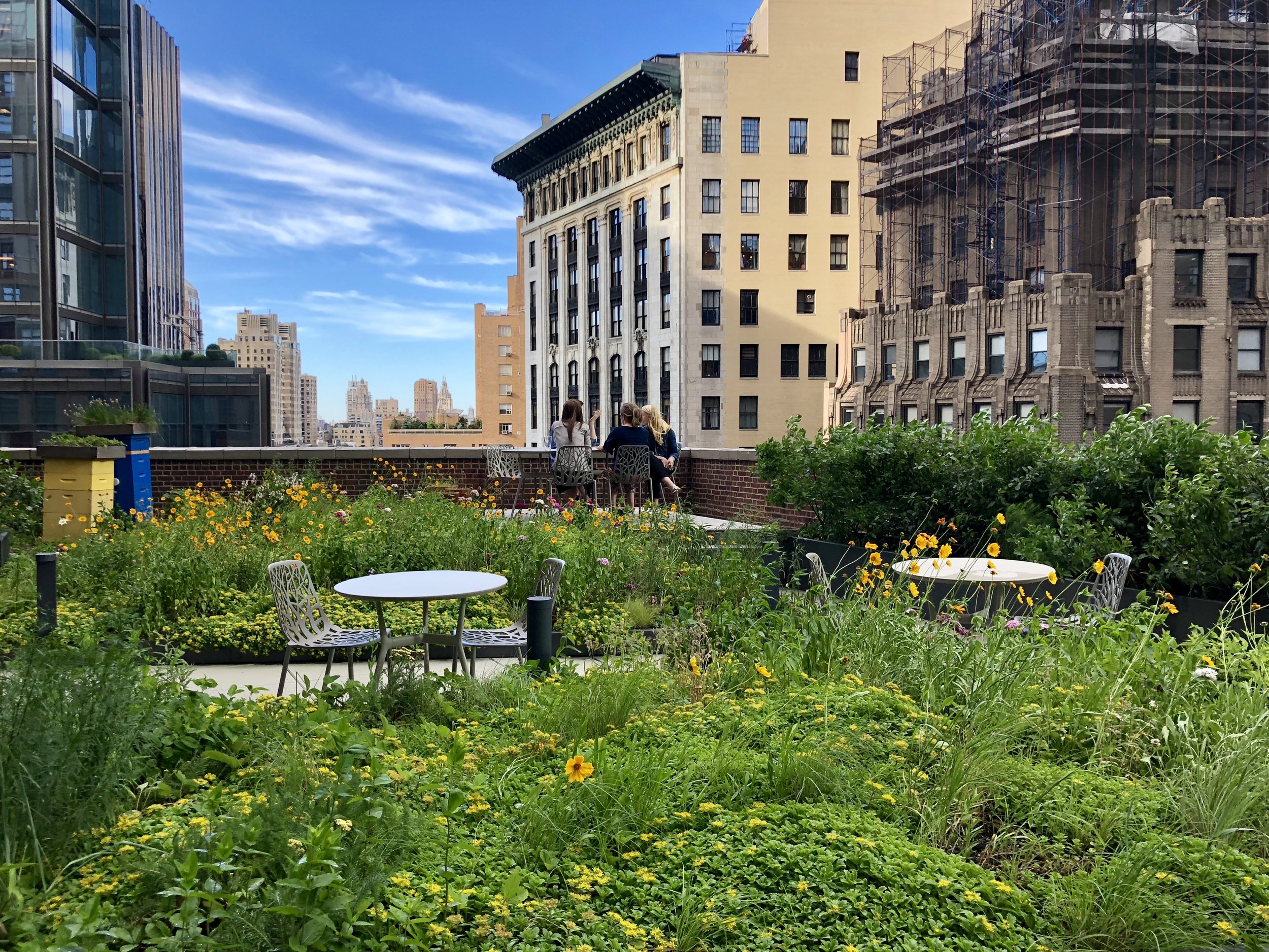A COMPREHENSIVE GUIDE TO INSTALLING A GREEN ROOF ON YOUR NYC CO-OP BUILDING
Adding a green roof to your co-op or condo adds multiple benefits to your building: it enhances aesthetics, and increases the property value. Moreover, a green roof protects your building’s membrane from UV rays, prolonging its useful life. This one investment improves quality of life for human residents and neighboring wildlife alike! In this guide, we will explore the step-by-step process of converting your New York City co-op roof into a vibrant green roof.
Green roofs can enhance property value, protect your building’s membrane, and improve your quality of life.
PHASE 1: PLANNING & RESEARCH
Read the room. Are you co-op’s finances in good standing? Do you have cash reserves, or are you currently in the middle of paying down a large assessment?
Before embarking on your green roof project, it's essential to do your homework. By conducting thorough research and preparing a solid case, you'll be better equipped to gain the support of your co-op board. For support, consider collaborating with like minded neighbors who share your vision! Form a committee dedicated to promoting sustainability within your co-op to demonstrate wide-scale interest. Here are a few things to consider during your research phase.
1. READ THE (CO-OP BOARD) ROOM
Is this a good time to install a green roof on your building? Are your co-op’s finances in good standing? Do you have cash reserves, or are you currently in the middle of paying down a large assessment? Is there need for an outdoor amenity space, and/or the will for a sustainability feature? These are some critical questions you should consider begin embarking further research and
2. ASSESS THE ROOF
How recently was your roof membrane replaced? If your building was just re-roofed and has a brand new membrane, it’s a great time to install a green roof! The #1 cause of damage to a roof membrane is UV rays, which degrade the material over time. Protecting it with a green roof can extend its useful life by at least four times! But, if your roof membrane is older and you have occasional leaks, you may want to wait to invest in a green roof until you’re replacing the roof membrane, as well, because–spoiler alert–a leaky roof will continue to leak even after you put a green roof on it.
New York buildings are old and not every roof is immediately equipped to be a green roof. Consult a structural engineer to determine if any modifications or reinforcements are necessary.
3. UNDERGO A STRUCTURAL ANALYSIS
New York buildings are old and not every roof is immediately equipped to be a green roof. Consult a structural engineer to determine if any modifications or reinforcements are necessary. A green roof can weigh as little as 10 lbs per square foot for an “extensive,” sedum roof, or over 100 lbs per square foot for an intensive green roof covered in biodiverse plant speciesl. Speaking of tenants, if you plan to make the roof a building amenity, you’ll need to ensure there’s adequate access, and parapet wall heights of at least 42”. Parapet wall height requirements can be met with simple, reasonably affordable retrofits like guard rails. Structural reinforcement is much more costly, and not even always possible at all.
4. BUILD A SOLID CASE & FORMULATE A FINANCIAL PLAN
If you succeed in all of the above, it’s time to work on your pitch deck. Research and gather information on the advantages of green roofs, such as energy savings, improved air quality, and increased property value. Prepare a compelling presentation highlighting these benefits and how they align with your co-op's goals. Research potential funding sources and analyze the long-term financial benefits of reduced energy costs and increased property value. Inevitably, the building will need to invest some capital into this project, whether you plan to pursue reimbursement via a Department of Environmental Protection Green Infrastructure Grant, or finance the asset via cash reserves or a special assessment. Obtain a quote or two, but to get you started, green roofs cost anywhere between $25 and $100 per square foot to install. Present a comprehensive financial plan to demonstrate the feasibility and financial advantages of a green roof.
PHASE 2 - DESIGNING YOUR GREEN ROOF: BRINGING YOUR APPROVED VISION TO LIFE
Congratulations! You’ve overcome the first hurdle. Once you've received approval from your co-op board, it's time to bring your green roof vision to life and bring in a green roof professional who will handle design, implementation, and compliance.
1. SHOP AROUND
Encourage active participation from your co-op community. Organize workshops or meetings to involve co-op members in the design process.
Consult multiple vendors! Reach out to a few green roof professionals who can assist you with the design, installation and maintenance process. Some companies may provide partial services, while others like Brooklyn Grange do it all. Their expertise will ensure that your design aligns with your co-op's goals and meets all necessary requirements.
2. COLLABORATE WITH THE COMMUNITY
Encourage active participation from your co-op community. Organize workshops or meetings to involve co-op members in the design process. Discuss, potential recreational areas, or communal spaces. This collaborative approach fosters a sense of ownership, strengthens the community bond and will encourage folks to take full advantage of their new communal space.
3. REFINE THE DESIGN
Now it’s time to really consider your goals and budget, work closely with the professionals to further refine your green roof design taking into account your co-ops capacity for maintenance and your usage desires. Perhaps you’re interested in incorporating a composting operation, or a small edibles section. Begin to zero in on your community’s vision for the roof and share that vision with the vendor you’ve selected to design and install it.
ENJOY YOUR ROOF!
Once you’ve installed the green roof on your co-op, you can enjoy it in various ways: an extensive, sedum green roof installed on a lower level like a garage can be a pleasure to look at from upper story windows, and you can take further satisfaction from knowing it is improving the air quality and ecosystem around your building! An intensive amenity space provides too many opportunities for enjoyment to list: from gardening together in a space you’ve carved out for vegetable plots, to building community through potlucks and seed exchanges, to using the space for rest and meditation!




